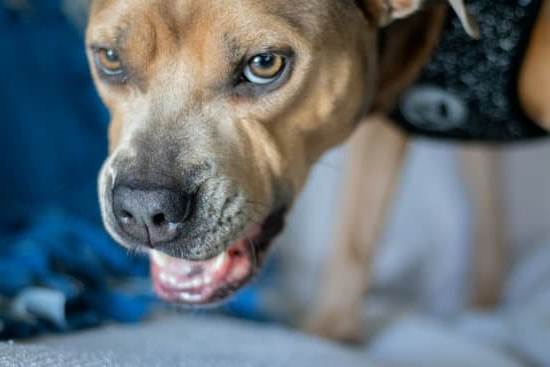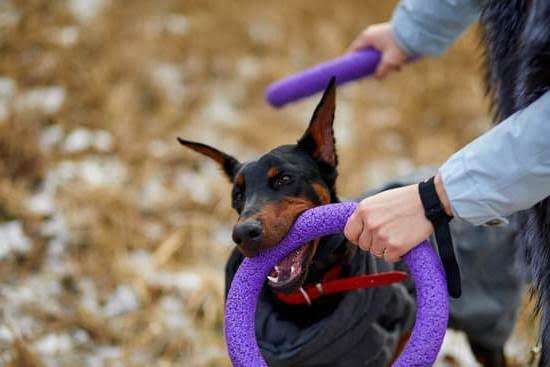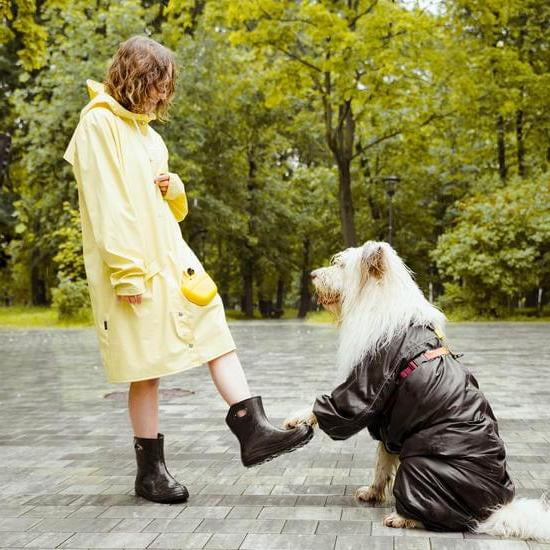Are you wondering, “Can male dogs be paper trained?” Paper training for male dogs is a common practice among pet owners.
This method involves teaching your male dog to urinate and defecate on a designated area indoors, typically using newspapers or puppy pads. In this article, we will explore the concept of paper training for male dogs, including its benefits, differences between training male and female dogs, tips for successful training, challenges and how to overcome them, the importance of consistency, and transitioning a paper-trained male dog to go outside.
Paper training can be a convenient option for pet owners who live in apartments or areas with limited outdoor space. It provides an alternative solution for allowing your male dog to relieve himself without having to go outside frequently. The process involves teaching your dog to use a specific area indoors as his designated bathroom spot.
Understanding the benefits of paper training for male dogs is essential for pet owners considering this method. Whether it’s due to extreme weather conditions, health reasons, or lifestyle preferences, paper training can offer convenience and peace of mind.
By incorporating positive reinforcement and consistent training techniques, you can successfully teach your male dog to use the designated indoor area for his bathroom needs. Stay tuned as we delve into the specifics of paper training for male dogs and the potential benefits it offers.
Understanding the Benefits of Paper Training for Male Dogs
Paper training for male dogs can have several benefits for both the pet and its owner.
First, paper training provides a convenient solution for pet owners who may not always be available to take their male dog outside to relieve itself. Whether due to work schedules or physical limitations, having a designated spot indoors where the dog can go serves as a practical alternative.
Additionally, paper training can be particularly beneficial during extreme weather conditions such as heavy rain or snow, when it may be uncomfortable or unsafe for the dog and its owner to venture outside. In such cases, having a designated indoor spot for the dog to use can help maintain a consistent potty routine and prevent accidents inside the house.
Furthermore, for male dogs that have not yet been neutered, paper training can help reduce marking behaviors indoors. By providing a specific area for the dog to eliminate waste, it may lessen the likelihood of territorial marking in other areas of the home. This can be especially helpful for pet owners who live in apartments or have limited outdoor space.
Differences Between Paper Training Male and Female Dogs
When it comes to paper training, one common question that arises is whether there are differences between paper training male and female dogs. While the basic concept of paper training remains the same for both genders, there are some notable differences to consider.
Urination Habits
Male dogs have a tendency to lift their legs when urinating, while female dogs typically squat. This means that when paper training a male dog, you may need to position the training pads or papers in a way that accommodates their lifting behavior. It’s important to place the pads in a corner or against a wall to encourage them to aim properly.
Marking Behavior
Another important difference is marking behavior. Male dogs have a natural instinct to mark their territory by urinating on vertical surfaces. This can pose challenges when paper training, as they may be more inclined to “miss” the designated area and instead mark other objects within the home. It’s essential to address this behavior early on by closely monitoring and correcting any attempts at marking outside of the designated area.
Training Duration
In some cases, male dogs may take longer to fully grasp the concept of paper training compared to females. This could be due to their territorial instincts or simply individual differences in learning speed. Patience and consistency are key when paper training any dog, but particularly so with males who may require additional time and reinforcement.
Understanding these differences will help pet owners effectively tailor their approach when paper training male dogs. With patience, positive reinforcement, and an understanding of these gender-specific behaviors, successfully paper training a male dog is entirely achievable despite these differences from females.
Tips for Successfully Paper Training a Male Dog
When it comes to paper training a male dog, there are some tips to keep in mind to ensure success. Here are some useful tips for successfully paper training a male dog:
- Choose the right location: Select a specific area in your home where you want your male dog to do its business. This could be a bathroom, laundry room, or any other area with easy-to-clean flooring.
- Consistent schedule: Establishing a consistent feeding and potty schedule is crucial for paper training. Take your male dog to the designated spot after meals, playtime, and naps.
- Positive reinforcement: Whenever your male dog uses the paper for elimination, be sure to praise and reward him with treats. Positive reinforcement goes a long way in encouraging desired behavior.
It’s also important to remember that patience is key when paper training a male dog. It may take time for him to get used to using the designated spot, so remain consistent and patient throughout the process.
Overall, these tips can help make the process of paper training a male dog more effective and efficient. By following these guidelines, pet owners can set their male dogs up for success in learning this important skill.
Common Challenges and How to Overcome Them When Paper Training a Male Dog
While paper training a male dog can have its benefits, it also comes with its own set of challenges. One common challenge is that male dogs tend to mark their territory, making it more difficult to train them to use a designated area for elimination. This behavior is instinctual, as it is in their nature to scent mark their surroundings.
To overcome this challenge, it’s important to keep the designated elimination area clean at all times. Male dogs are less likely to mark an area that is already free from their scent.
Another challenge when paper training male dogs is the difficulty in transitioning them from using the indoor potty area to going outside. This can be especially tough for male dogs who may have become accustomed to eliminating indoors. To address this issue, gradual transition is key. Start by moving the indoor potty closer and closer to the outdoor potty area until your male dog begins associating the two areas.
In addition, some male dogs may be more stubborn or resistant compared to female dogs when it comes to paper training. Patience and consistency are crucial in overcoming this challenge. positive reinforcement should be used consistently when training your male dog, along with plenty of praise and rewards for successful eliminations on the designated paper area.
| Challenge | Overcoming Strategy |
|---|---|
| Male marking behavior | Keep designated area clean; use positive reinforcement |
| Difficulty in transitioning outdoors | Gradual transition; move indoor potty closer to outdoor area |
| Male stubbornness/resistance | Patience, consistency, positive reinforcement, praise and rewards |
The Importance of Consistency in Paper Training Male Dogs
When it comes to paper training male dogs, consistency is key to achieving success. Consistency in the training process helps the dog understand what is expected of them and facilitates quicker learning and positive behavior. Here are some ways in which consistency plays a crucial role in paper training male dogs:
1. Regular schedule: Establishing a regular schedule for feeding, potty breaks, and playtime can help reinforce the paper training process. By taking the dog to the designated potty area at the same times every day, they learn when it’s appropriate to relieve themselves.
2. Use of cues: Consistently using verbal cues or commands when it’s time for the dog to eliminate can aid in their understanding and response to the training. Employing phrases such as “go potty” or “do your business” can signal to the dog what is expected of them.
3. Positive reinforcement: Consistently rewarding the dog with treats or praise when they use the designated potty area encourages them to continue exhibiting the desired behavior. This positive reinforcement creates a consistent association between using the correct area and receiving a reward.
Consistency in these aspects of paper training reinforces good habits and helps male dogs understand where they should eliminate, ultimately leading to successful paper training outcomes.
How to Transition a Paper-Trained Male Dog to Go Outside
Gradual Transition
When transitioning a paper-trained male dog to go outside, it’s important to do so gradually. Start by moving the training pads closer and closer to the door leading outside. This will help your dog understand that the designated potty area is shifting. Once the pads are right next to the door, start taking your dog outside to the same spot where the pads used to be placed.
Establish a New Routine
Establishing a new routine is crucial when transitioning a paper-trained male dog to go outside. Take your dog out at regular intervals, such as first thing in the morning, after meals, before bedtime, and any time he shows signs of needing to go. Be patient and consistent during this transition period as it may take some time for your dog to adjust to the change.
Positive Reinforcement
Using positive reinforcement during the transition process can be very effective. Praise your dog when he goes potty outside and consider giving him a treat as a reward. Positive reinforcement will help your dog understand that going potty outside is what you expect from him now. Be sure not to scold or punish your dog if accidents happen during this transition period as it may confuse or stress him out.
Conclusion
In conclusion, paper training can be a successful and beneficial potty training method for male dogs. While it may require some patience and consistency, the benefits of having a male dog who is paper trained can make the effort well worth it. By understanding the concept of paper training and following the tips for success, pet owners can effectively train their male dogs to use designated indoor potty areas.
It is important to note that the process of paper training may differ slightly between male and female dogs, but with the right approach, both genders can be successfully paper trained. Understanding these differences and adjusting training methods accordingly can help pet owners achieve success in potty training their male dogs.
Overall, the key to successful paper training for male dogs lies in consistency, patience, and positive reinforcement. By addressing common challenges and staying committed to the process, pet owners can set their male dogs up for success in using an indoor potty area.
Additionally, proper transitioning techniques can help pet owners eventually move their paper-trained male dogs to go outside when necessary while still maintaining good indoor potty habits. With dedication and the right approach, paper training can indeed be a successful and beneficial option for male dogs.
Frequently Asked Questions
Can a Male Dog Be Pee Pad Trained?
Yes, a male dog can be pee pad trained. While male dogs may have a tendency to lift their leg and mark their territory, they can still be trained to use pee pads for potty needs, especially if they are not able to go outside regularly or if the owner prefers this method of potty training.
Are Boy Dogs Harder to Potty Train?
Boy dogs are not necessarily harder to potty train than female dogs. The difficulty of potty training depends more on factors such as consistency in training, positive reinforcement, and the individual dog’s temperament rather than their gender. With patience and a proper training approach, both male and female dogs can be successfully potty trained.
Can You Paper Train an Older Dog?
Yes, it is possible to paper train an older dog. While it may take more time and patience compared to training a puppy, older dogs can still learn new habits with consistent training.
Paper training can be especially useful for older dogs who may have mobility issues or live in apartments where regular outdoor access is limited. With positive reinforcement and consistency, older dogs can adapt to paper training effectively.

Welcome to the blog! I am a professional dog trainer and have been working with dogs for many years. In this blog, I will be discussing various topics related to dog training, including tips, tricks, and advice. I hope you find this information helpful and informative. Thanks for reading!





